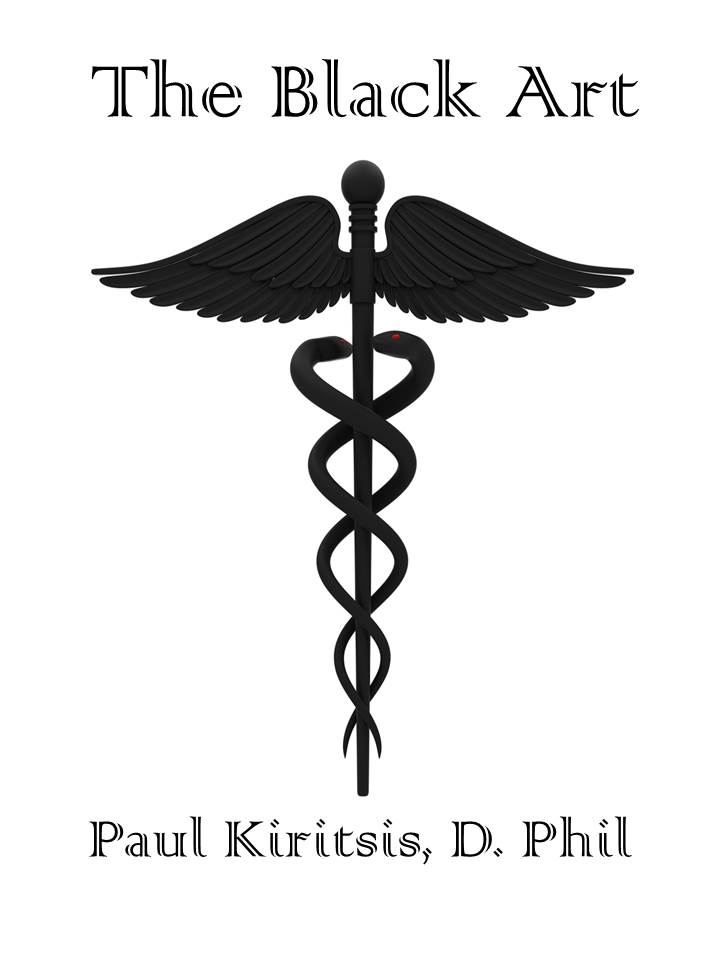
Maria the Jewess, a legendary alchemist of the first centuries ce, reputedly quoted that “One becomes two, two becomes three, and out of the third comes the one as the fourth.” While the Swiss psychiatrist Carl Gustav Jung (1875-1961) localized the axiom to the sphere of analytical psychology as symbolic recognition of the lifelong process of individuation or self-actualization, most esotericists and occultists have understood it as the cosmic schism initiated by the friction between the active, masculine “Sol” and the passive, feminine “Luna” to enable a third state. The third denotes a condition of creative unity through synthesis, but also the fallen Adamic state of conceptual limitation, inertia, petrification, devolution, stagnation and neutralization. One could call it the inverse of Jungian individuation; an annulment of the two volatile formative powers hastened by their conflicting charges. The cross of the elements and the quasi-historical crucifixion of the Christ are figurative transliterations of this mode of existence.
In defiance of the Jungian perspective, the just mentioned condition is not exclusive to the psychological realm but extends to encompass all processes of creation. The Swiss polymath Paracelsus (1493-1541) named these three principles of primal matter Philosophical Sulphur (soul), Mercury (spirit) and Salt (body). Proceeding from this Neoplatonic-flavoured division of the cosmos Paracelsus argued that the first exhibited a neutral charge, the second a positive charge, and the third a negative charge.Sulphur or ‘soul’ is the mediating principle between ‘spirit’ and ‘body’ that fuses the polar opposites together for a complete life cycle of the organism or object whilst concurrently accounting for physiognomy and growth, Mercury or ‘spirit’ is the intangible essence that mimics corporeal vapour or water and eludes direct observation and quantitative analysis, and Salt or ‘body’ binds the physical form together so that it doesn’t dissipate and adheres to the ashes once the organism or object is alchemically burned.
Frater Albertus’s (1911-1984) spagyrical method for the isolation of the life principle or vital force of a particular plant or herb is based on the same theoretical premises. In his vivifying, concise, and instructive work The Alchemist’s Handbook, Frater Albertus reintroduces practical alchemy to a hitherto untutored American audience and makes a startling revelation in the process; the blueprint, signature, life principle, vital force–call it what you will–can in fact be can be isolated from an organism or substance through conventional chemical procedures. According to Albertus subjecting a fresh or dried herb to the distillatory process generates a twofold division of matter into oil and dead residue. The latter can be charred to black and light grey cinders; this is physical Salt. Unlike Mercury whose characteristics and vibrations are uniform across each of the three primary kingdoms, the fundamental makeup of Salt is different in organisms or substances that share a particular classification. The reason for this might lie in the fact that Salt carries the individual qualities of the organism, the outward and inward features which make it unique in the cosmos.
When transposed to the microcosm Salt assumes multiple forms and possesses a double meaning; it is the corporeal vessel itself, the human body and brain in which the mind and unconscious will are confined, as well as the corpus of physical senses that keeps one bound to carnal pleasures and conditioned to archaic perceptions which inadvertently withhold the widening of individual consciousness. Its power of inertia disables the conjunction of ego with the paraphysical multiverse that illuminates an underlying cohesion to all life and facilitates meaning, like a transistor delimiting the passage of electrical signals to an electronic gadget. If watery Mercury acts as a dissolving and evaporative agent and fiery Sulphur as a combustive and coagulative one, then Salt, like its purely physical constituent, must be the calcined ashes that delineate the contemporaneous form of the volatile spirit.
In the repeated conjunctions of Sulphur (soul) and Mercury (spirit) that enable the alchemical movement from prima materia to ultima materia, Salt (body) serves as the mold enabling the limitless and eternal powers to intersect and creatively unite in quite the same way that the rungs of a ladder allows one to vertically ascend along the wall of a multistory building. In transposing this cosmic state to the human microcosm and macrocosm we see that, when hermetically purged of its egoisms, its self-centred and self-gratifying urges and its sexually-orientated lusts, the mind-body interaction facilitates contemplation of these individual ‘fixative’ states by incarcerating the multifaceted field of suprapersonal psychic energy emanating from the primordial abyss of the collective cosmic psyche. One could compare Salt (body) to a stone bridge arching over a torrential waterway, enabling a bird’s eye view of the subjectively experienced kaleidoscope of consciousness, or a digital camera which captures portraits of the same individual as he or she traverses the eternal sands of time. Much like the stone bridge or digital camera, Salt permits the divine intellect to objectively sense and perceive, to interpret and comprehend the causal interaction between an outer, natural world existing in time and space and an inner, spiritual and psychic realm of forms and ideas in which time and space are nonexistent. It is, without a doubt, an intuitively felt, objectified and clearly demarcated echo of cosmic anatomy.
In alchemical esotericism, Philosophical Salt is exemplified by a circle bisected by a horizontal line.









